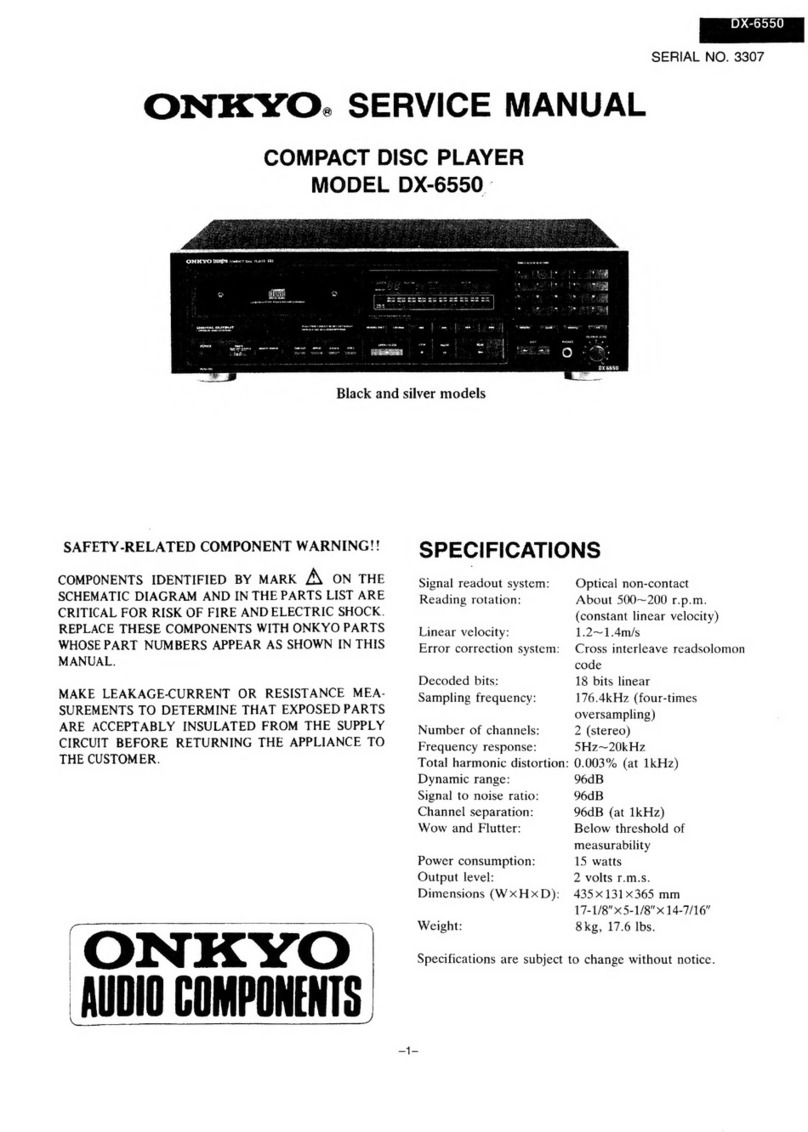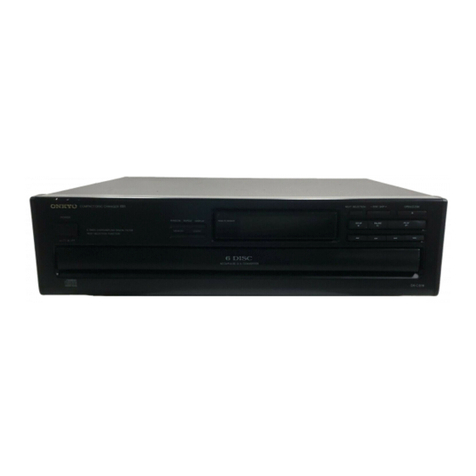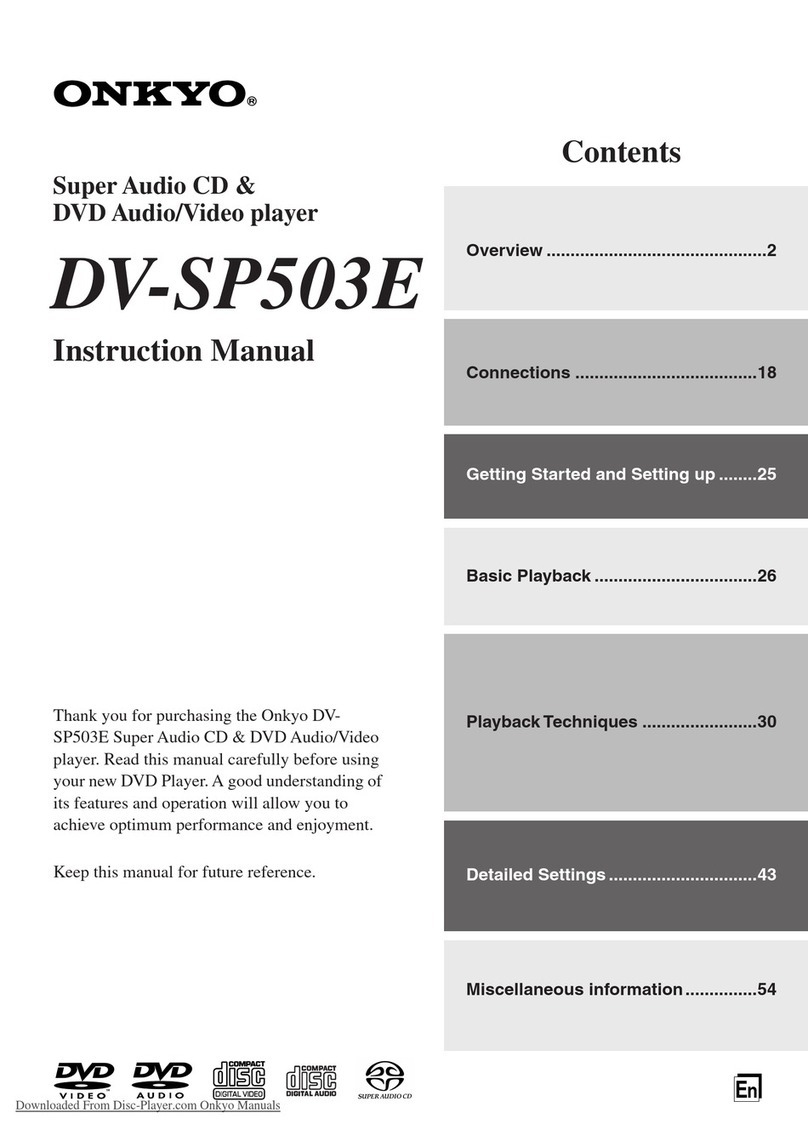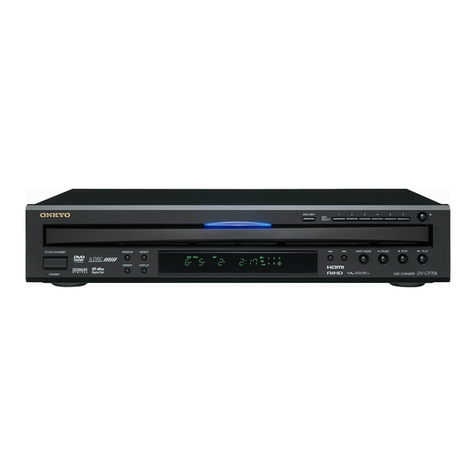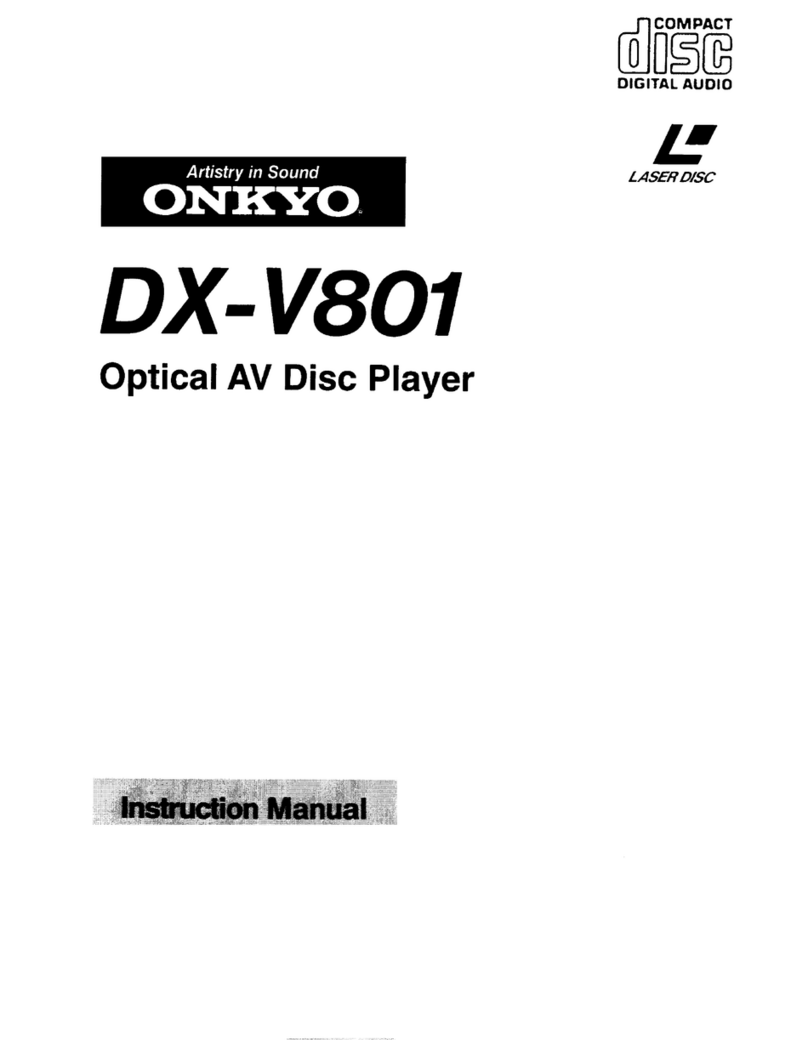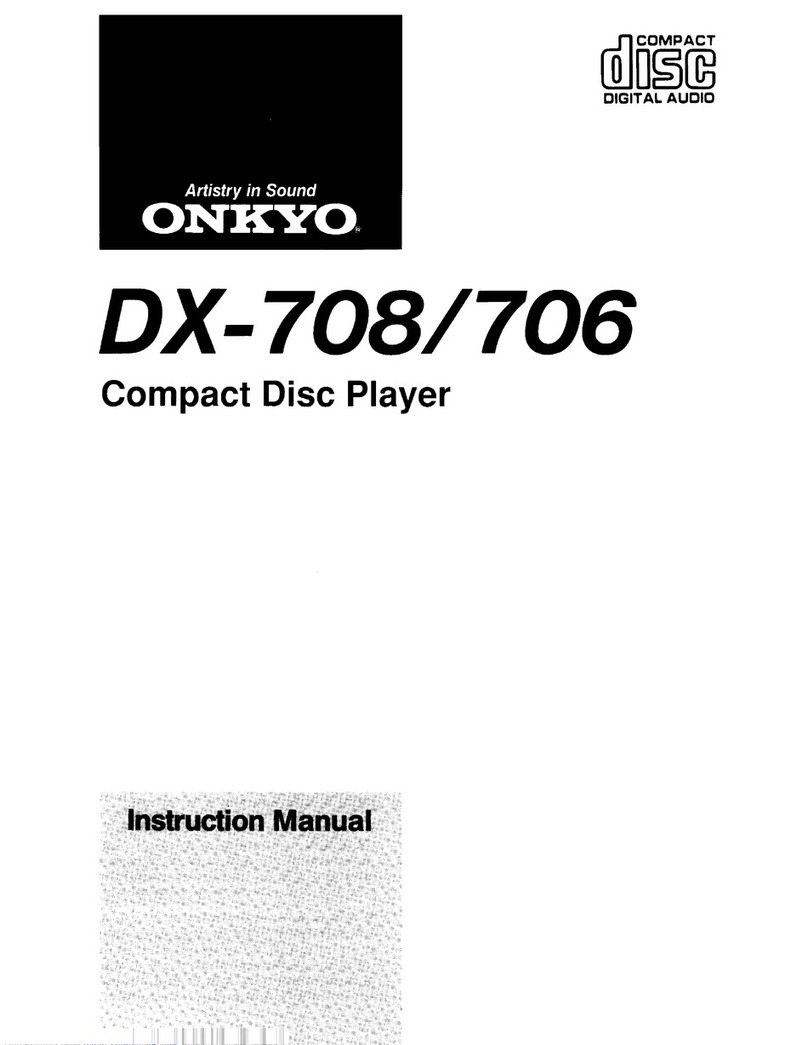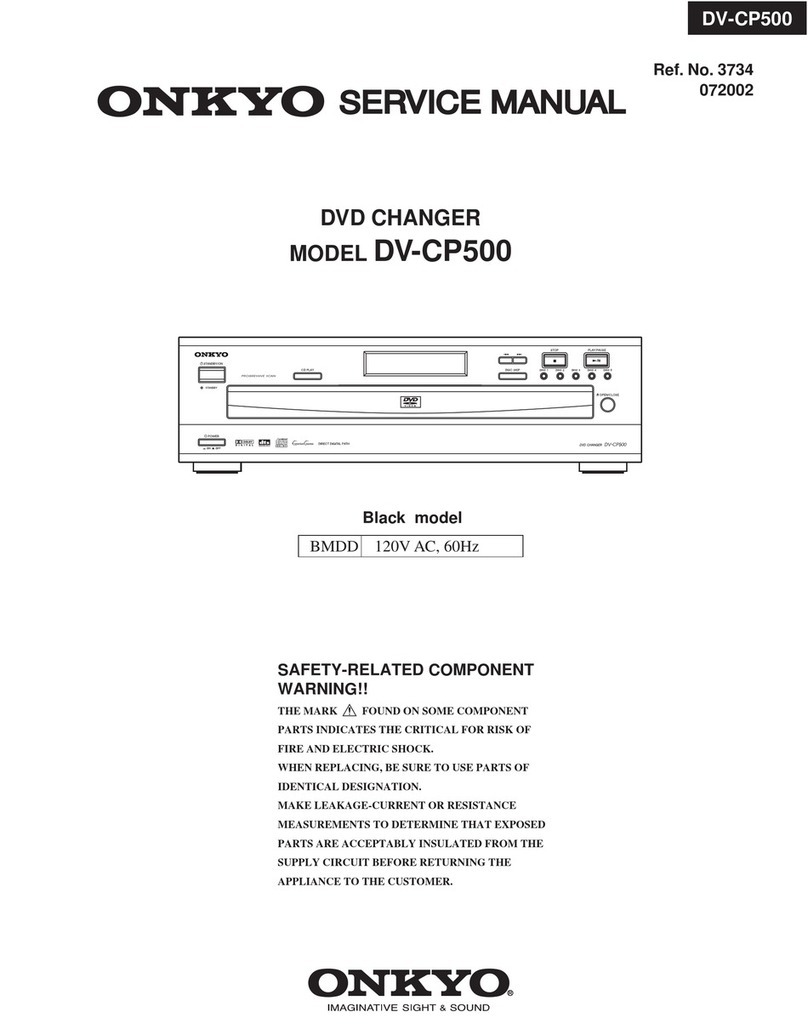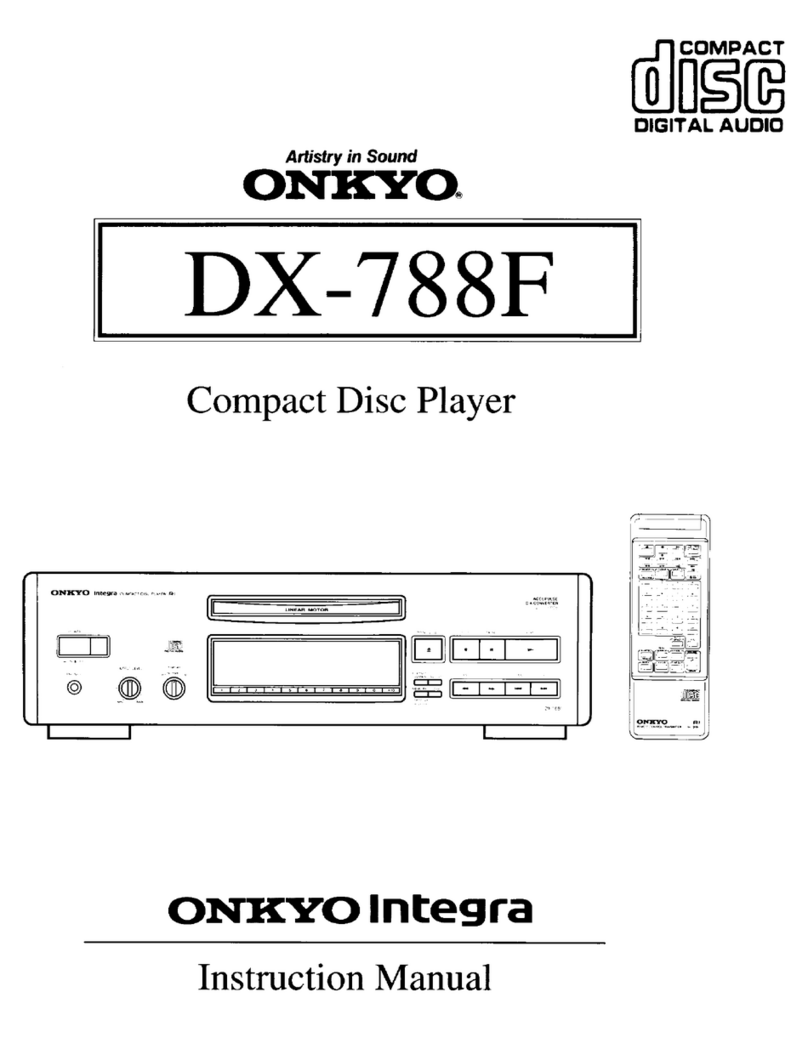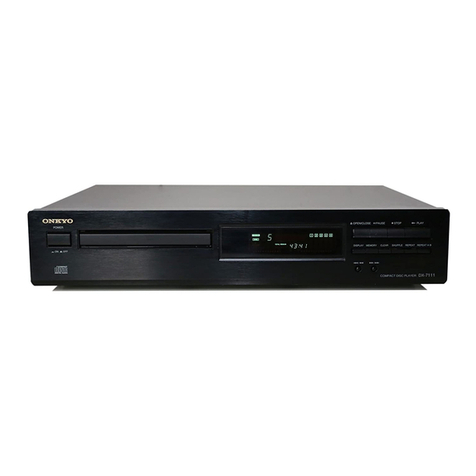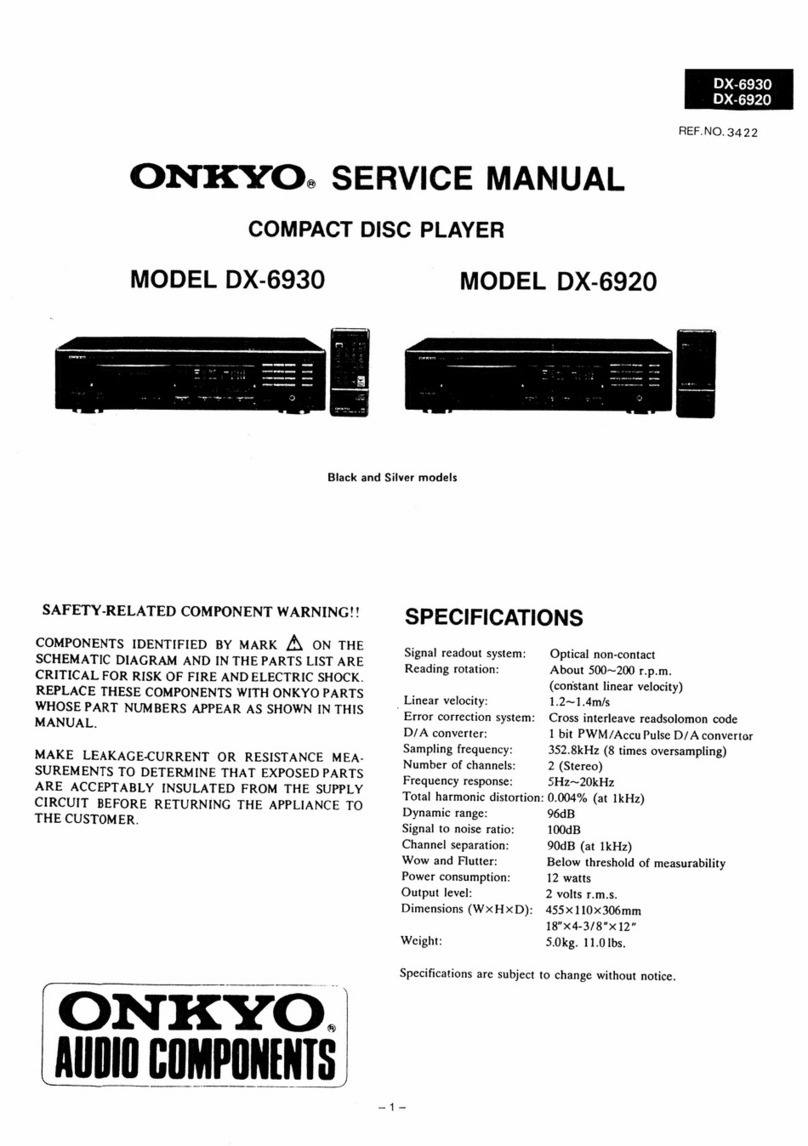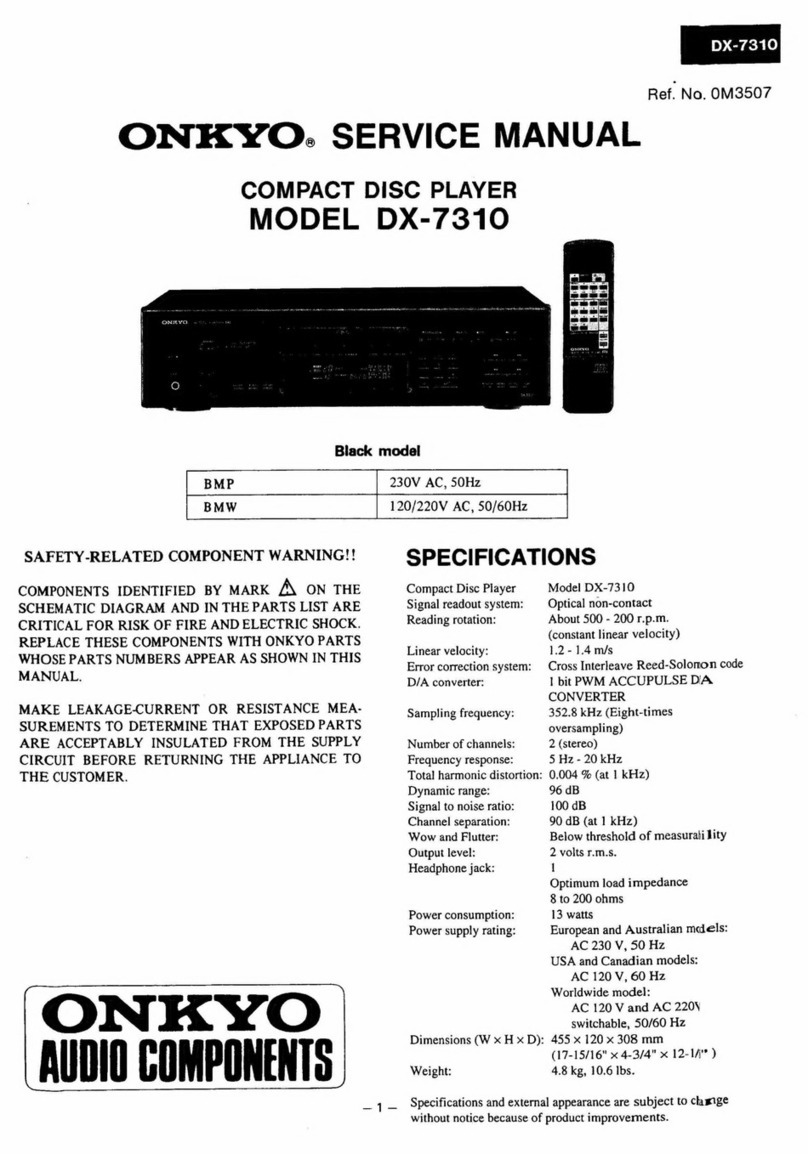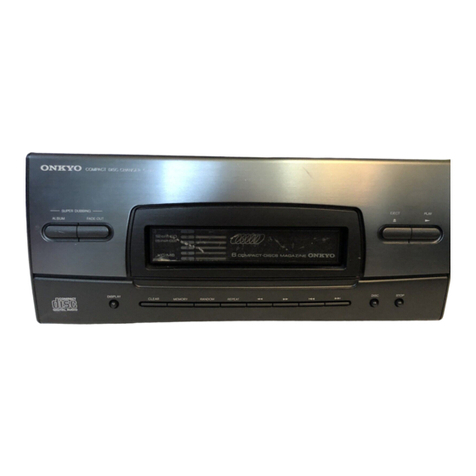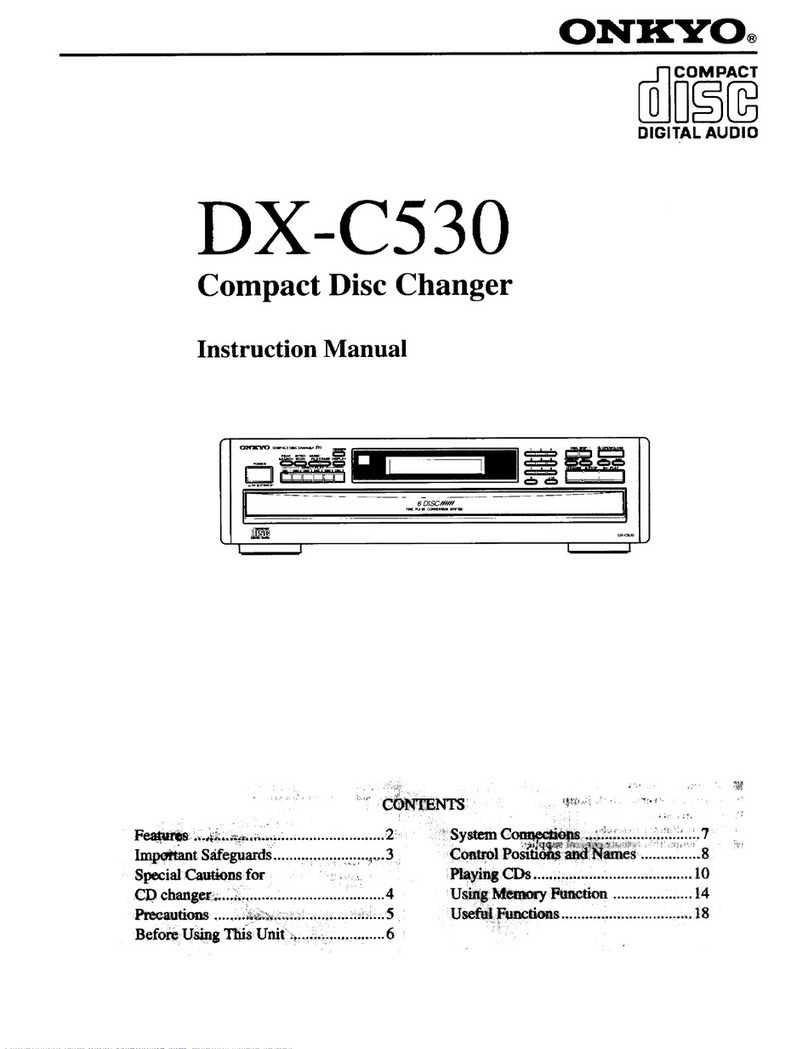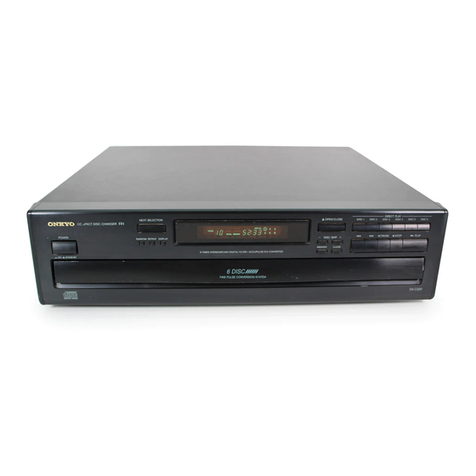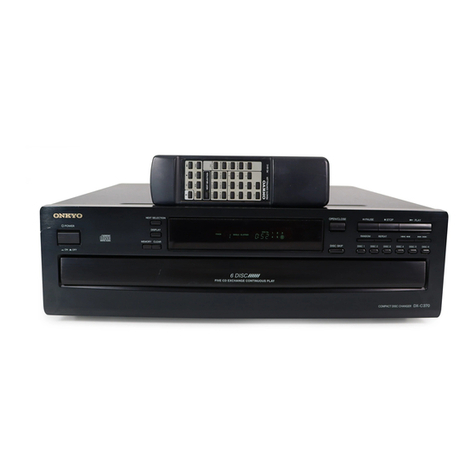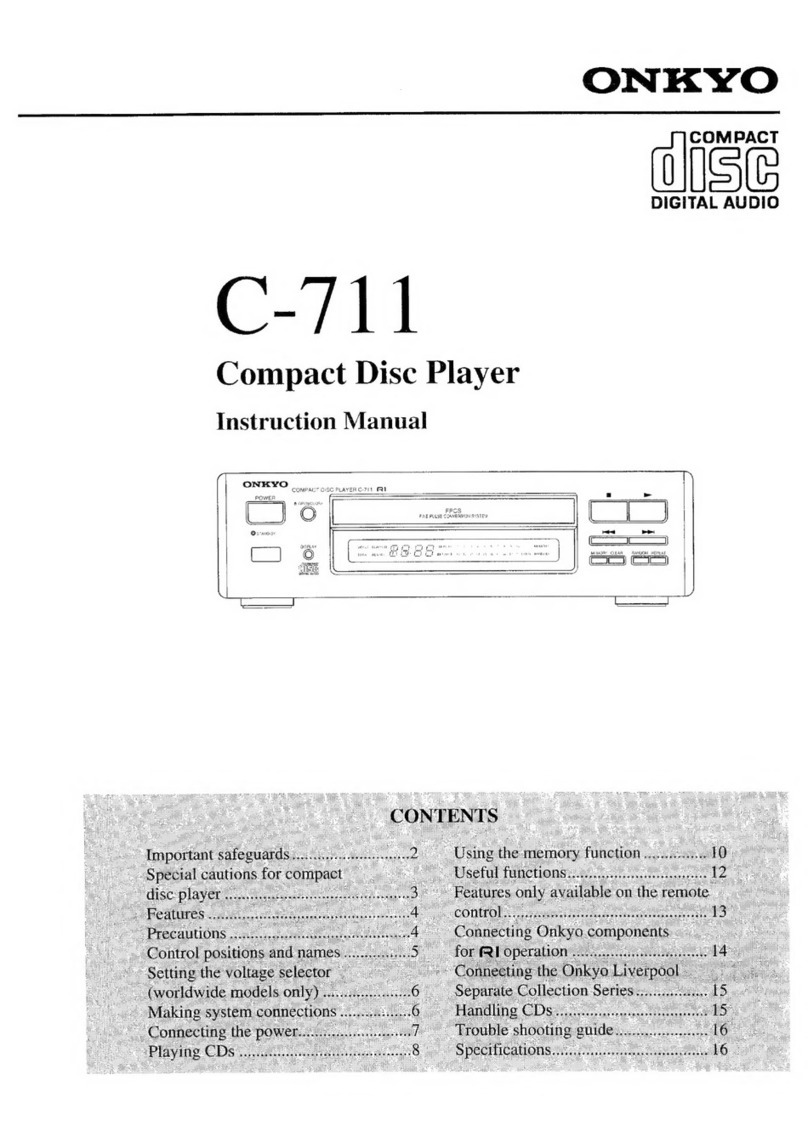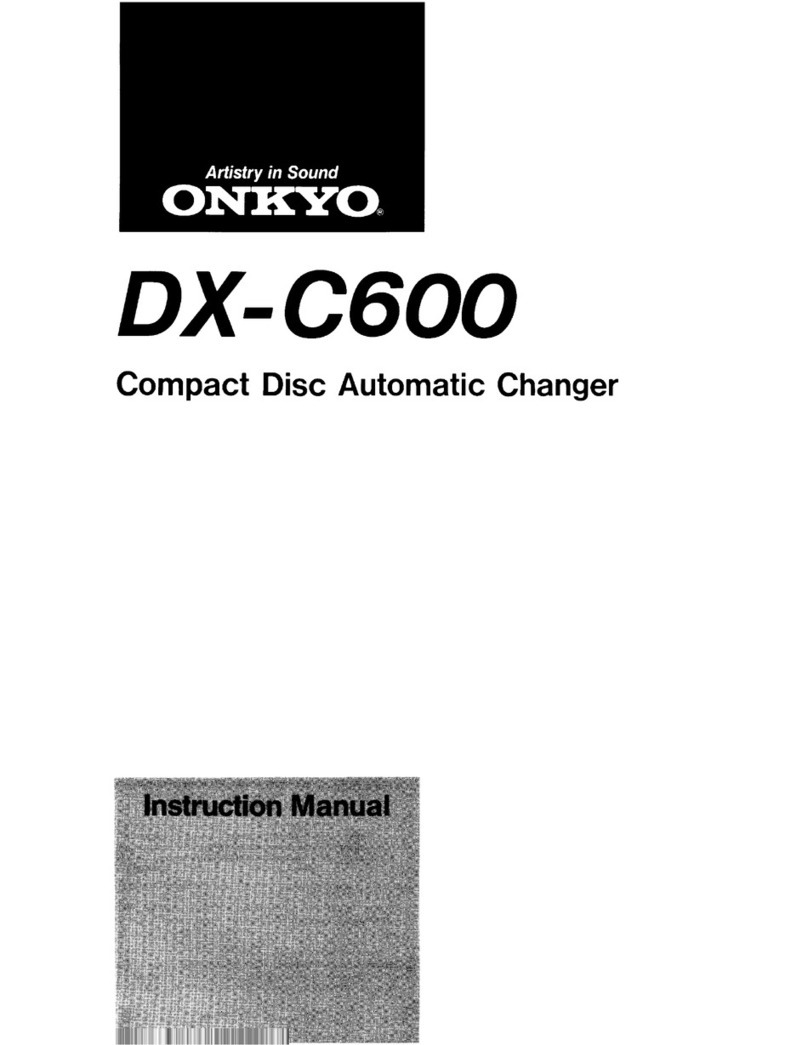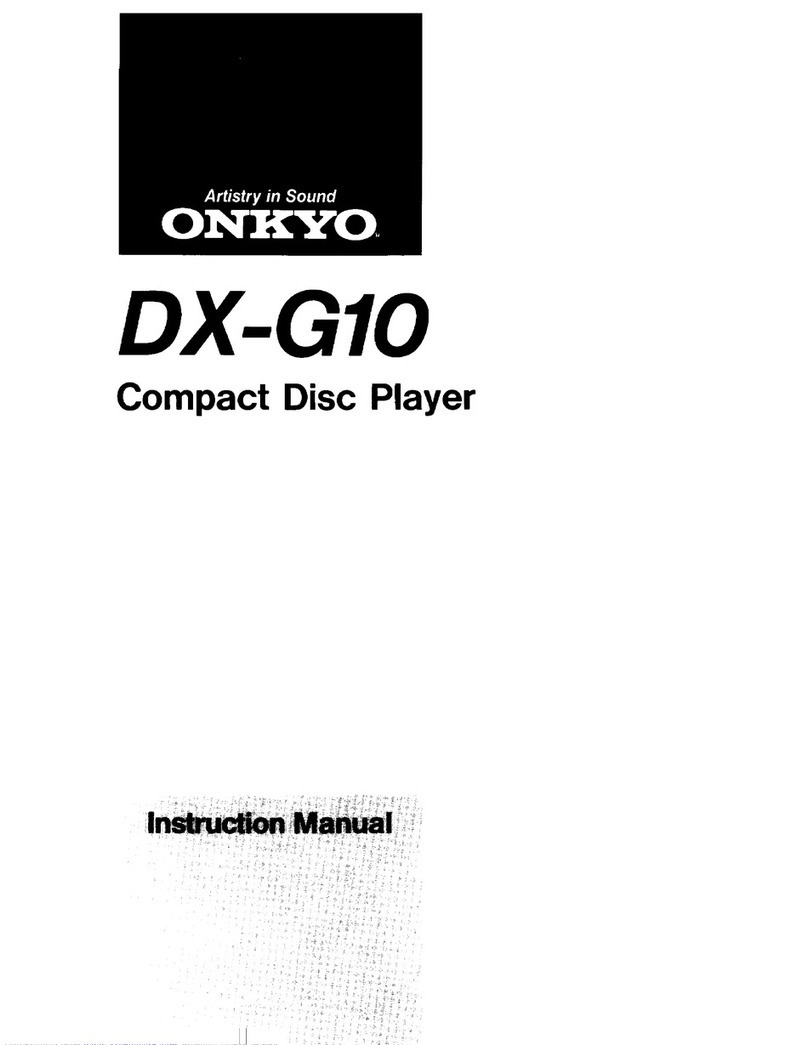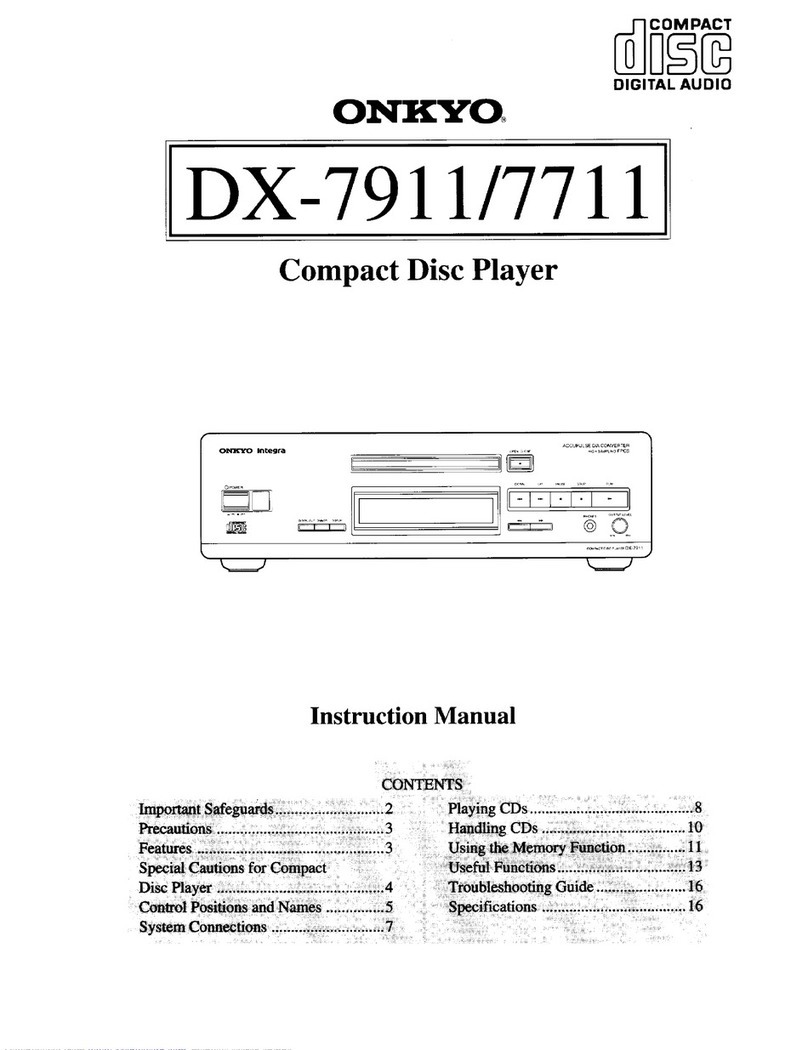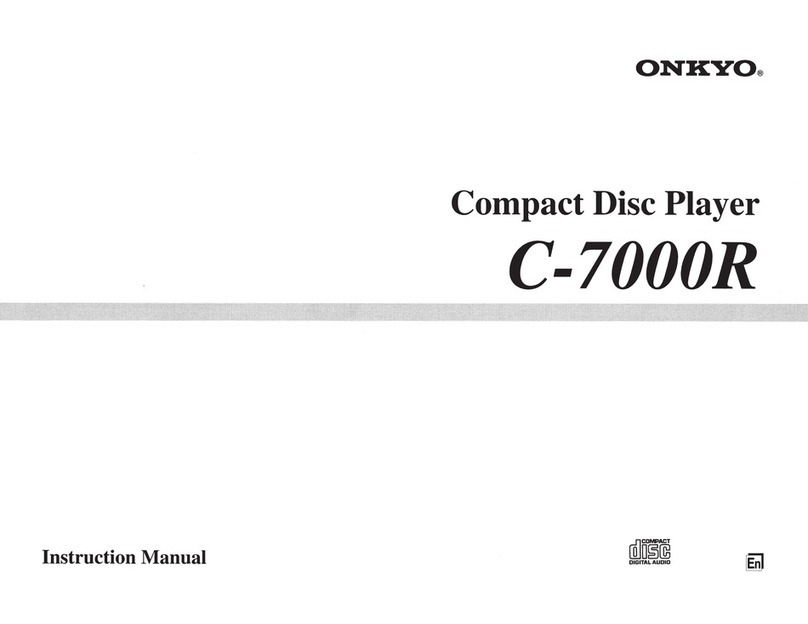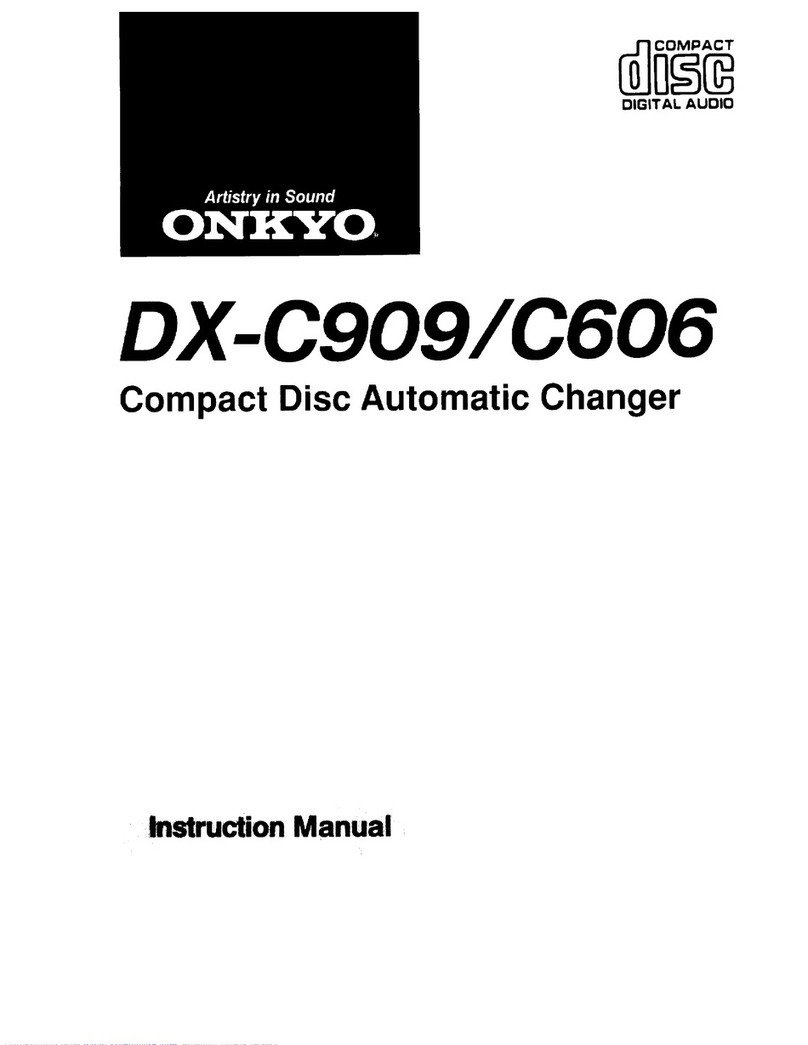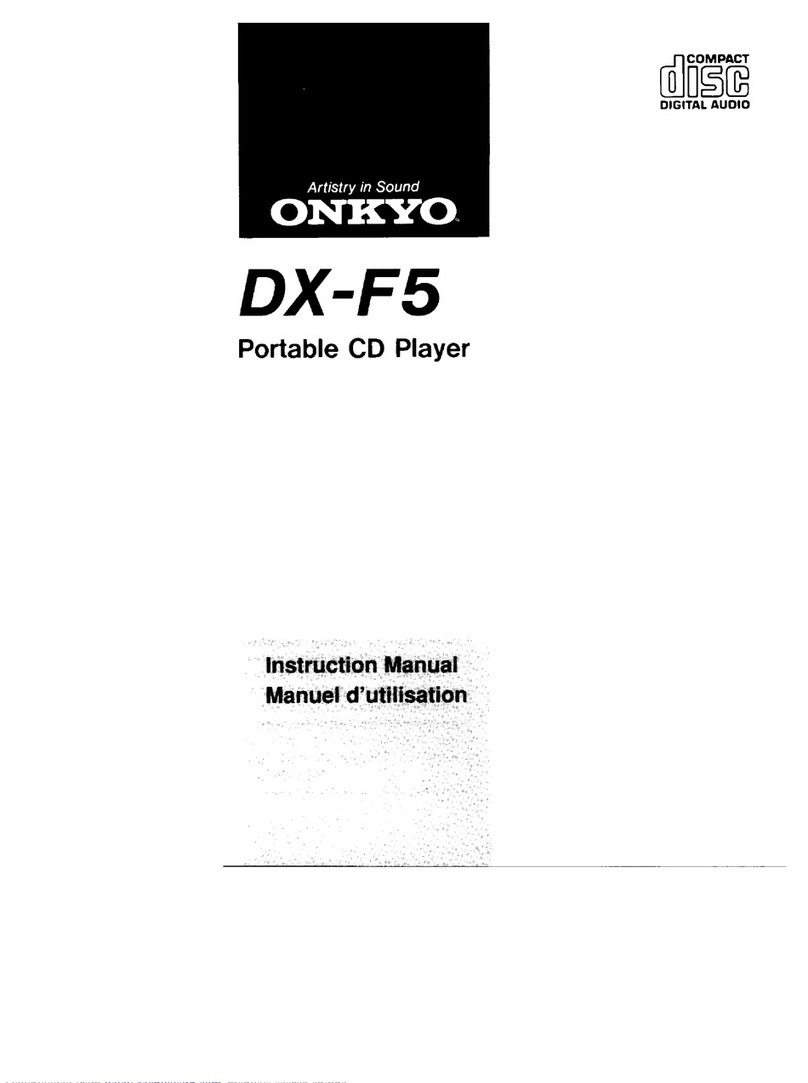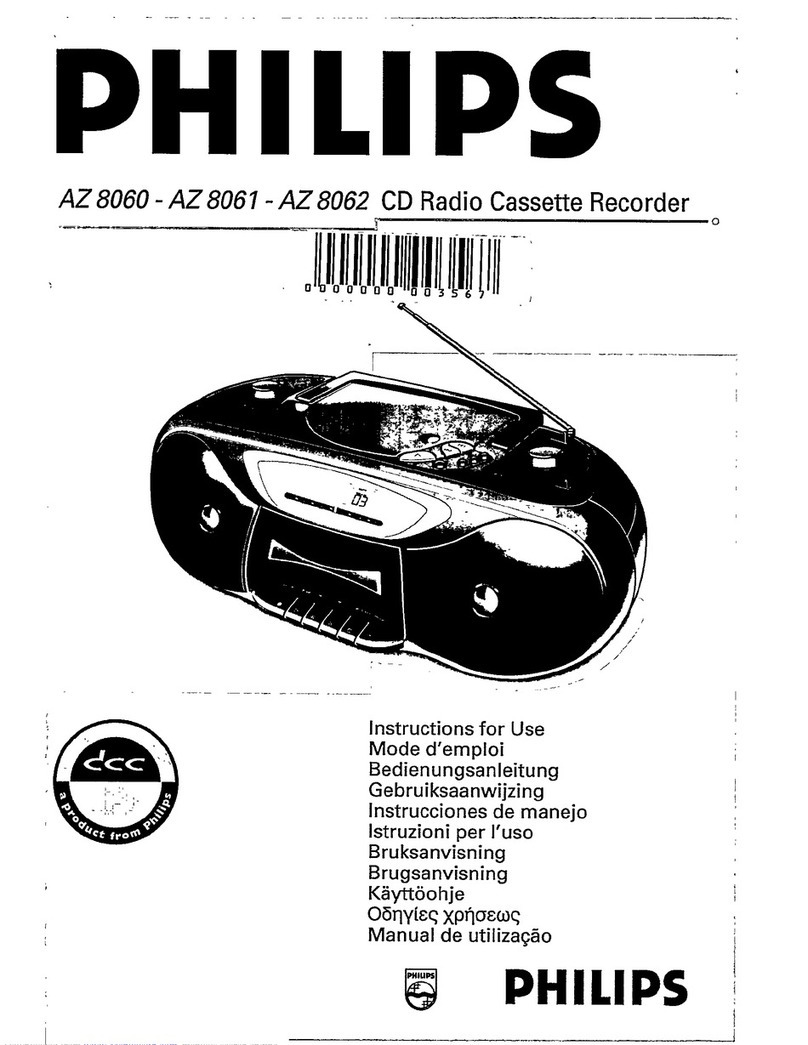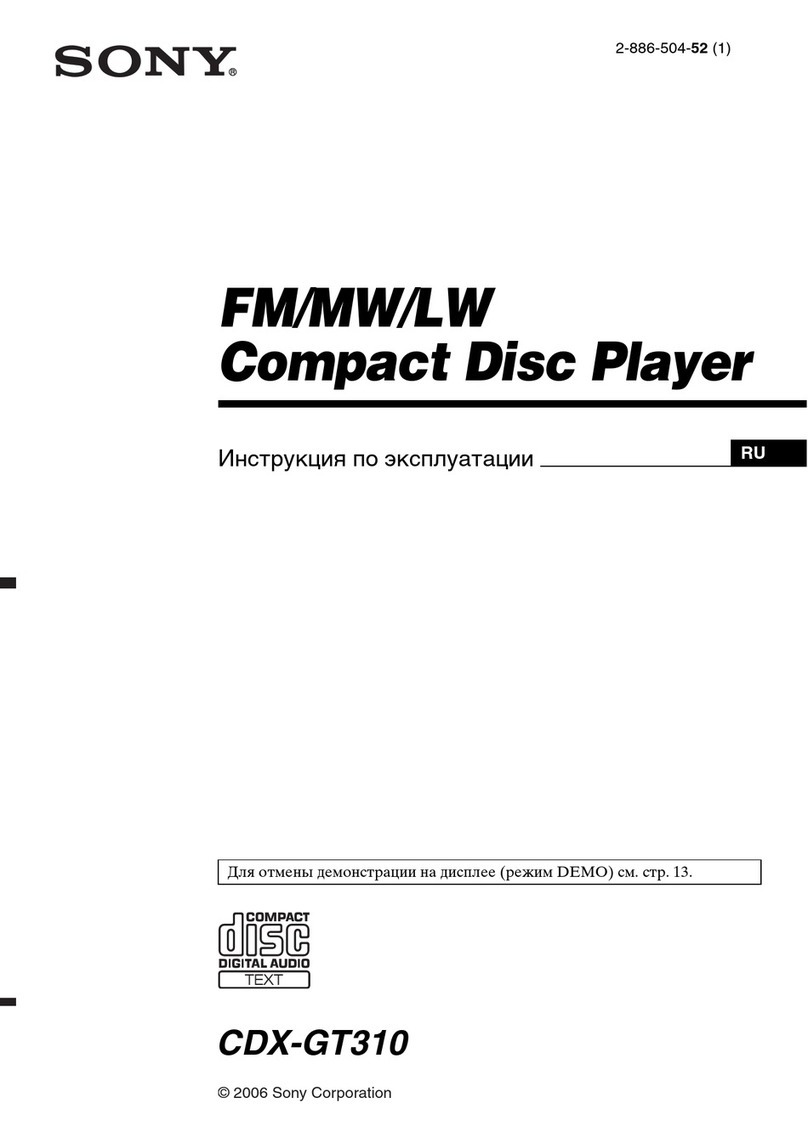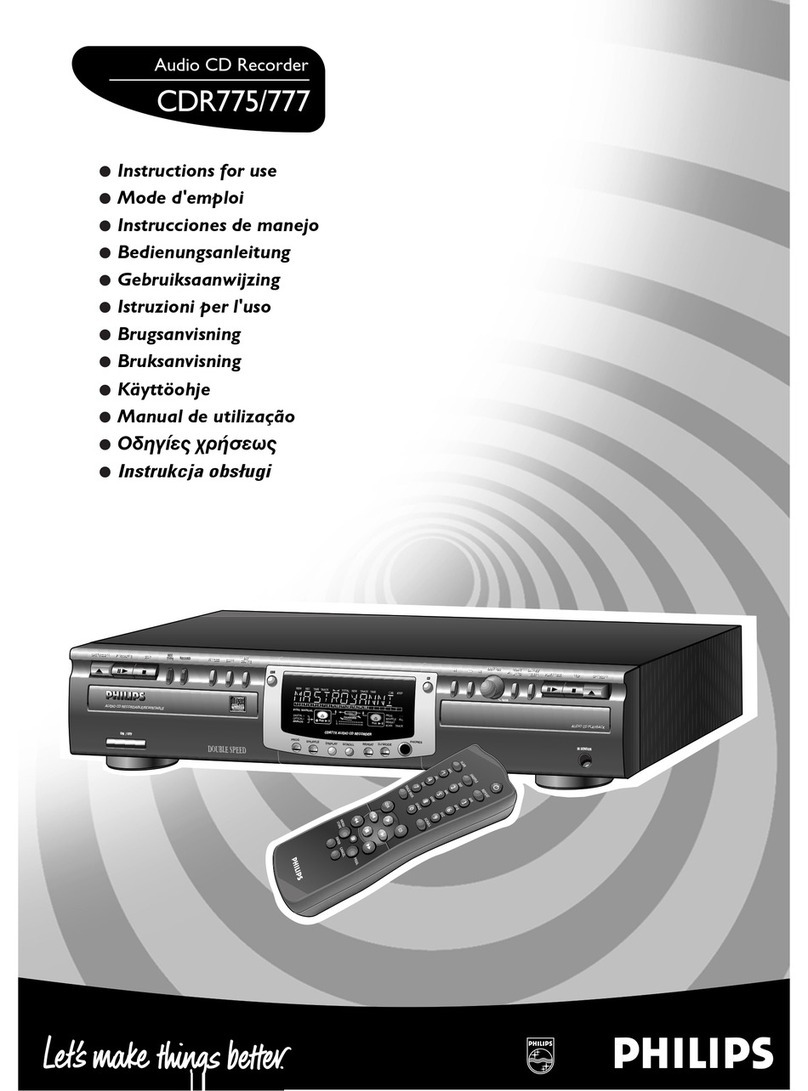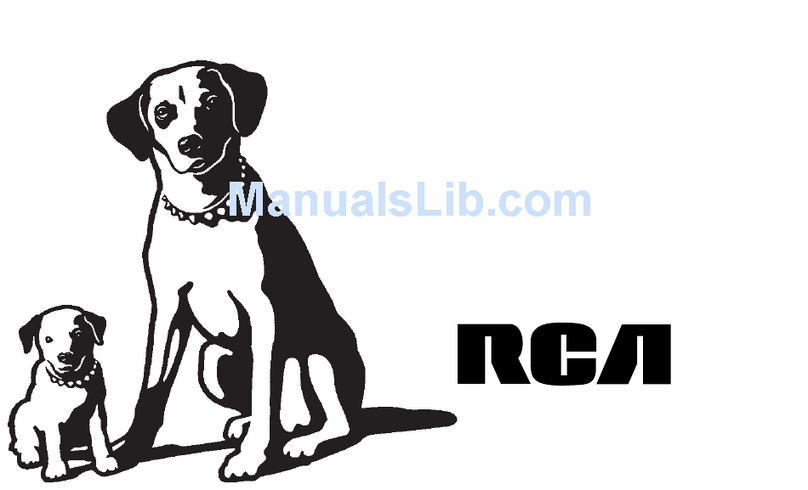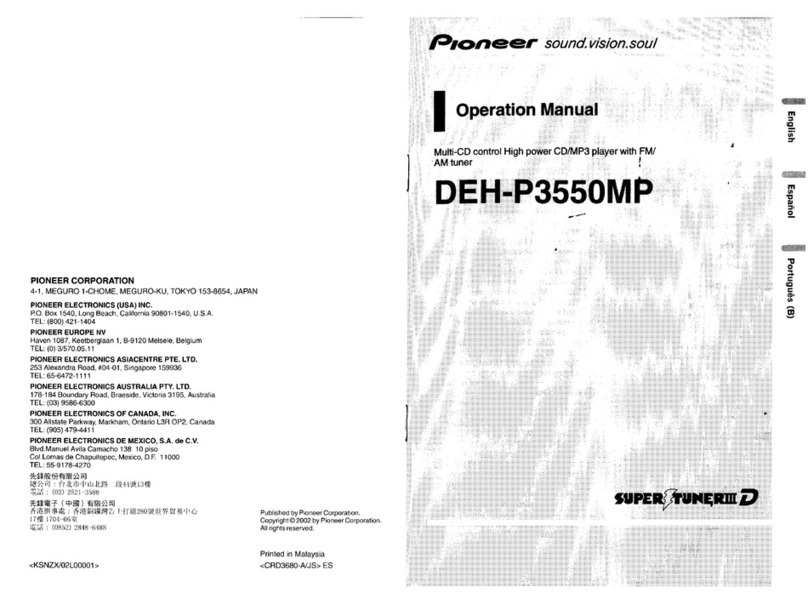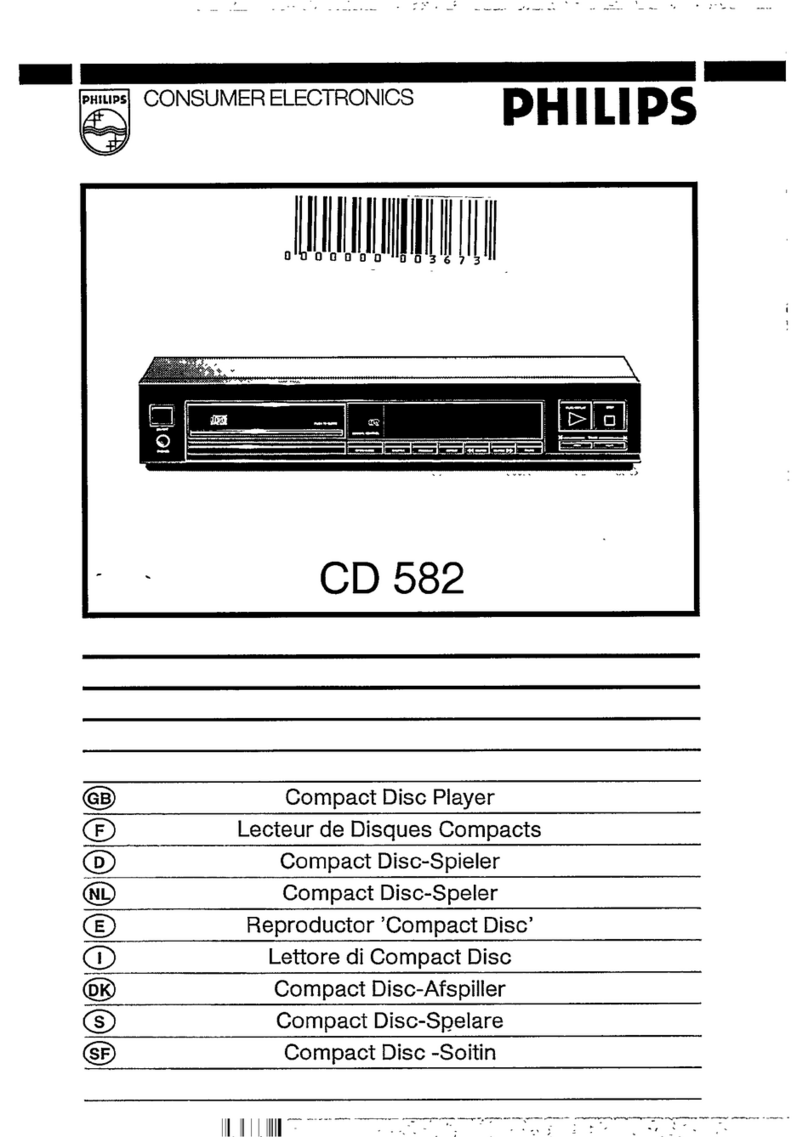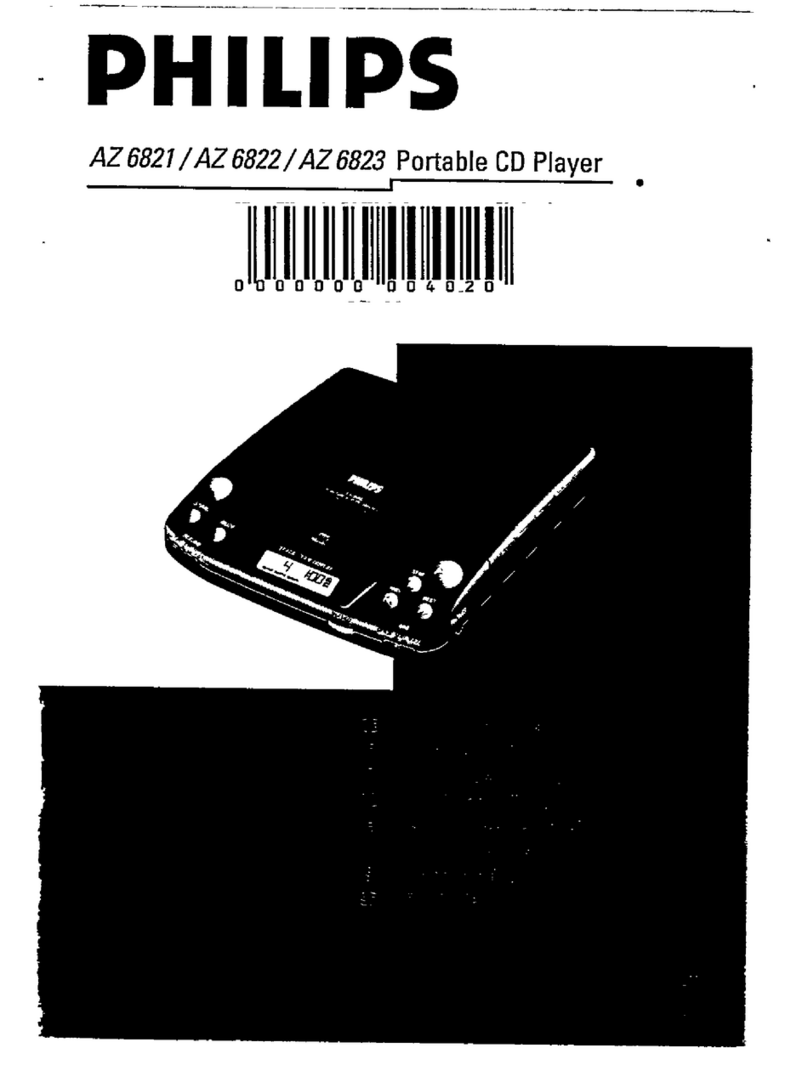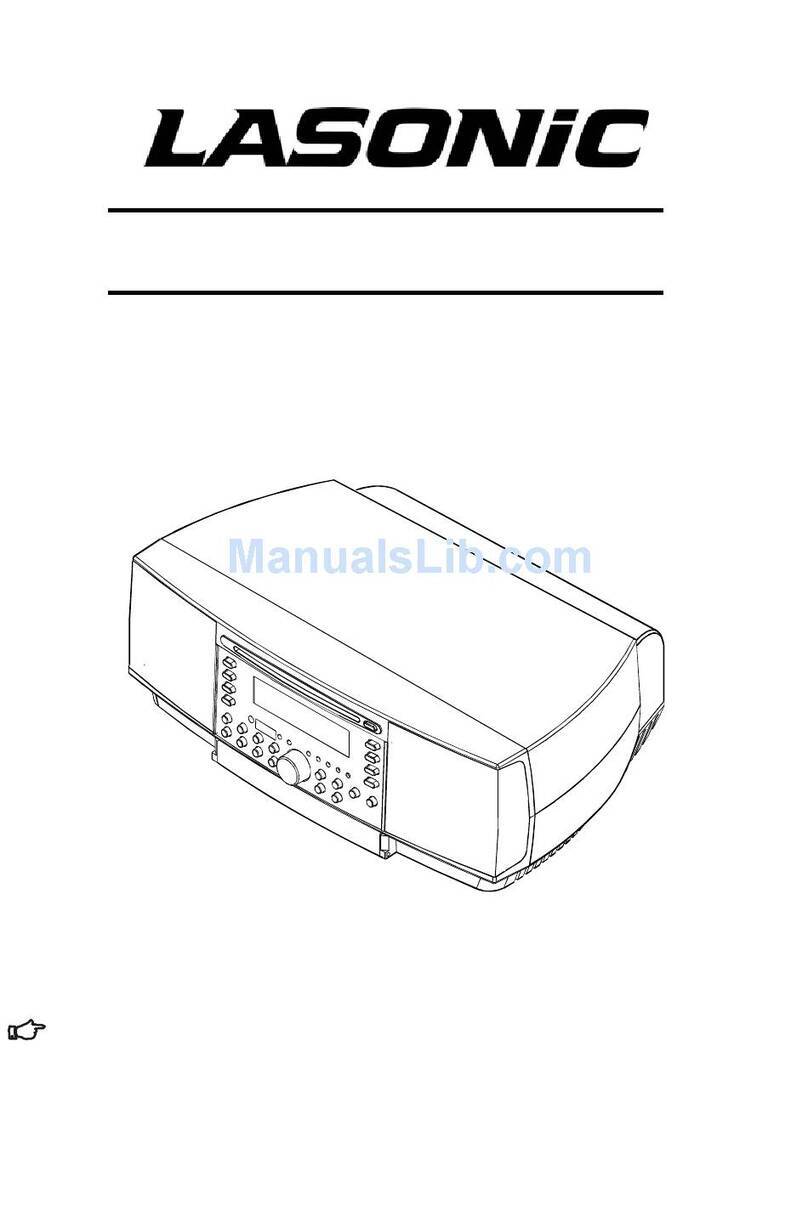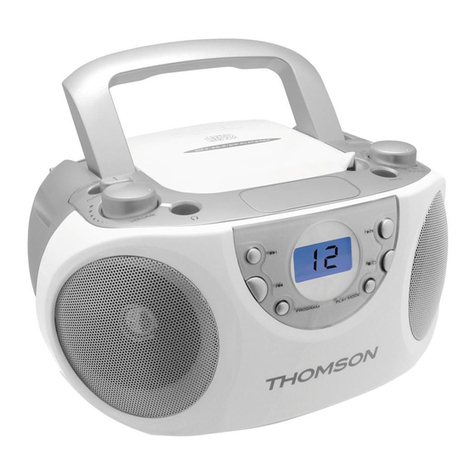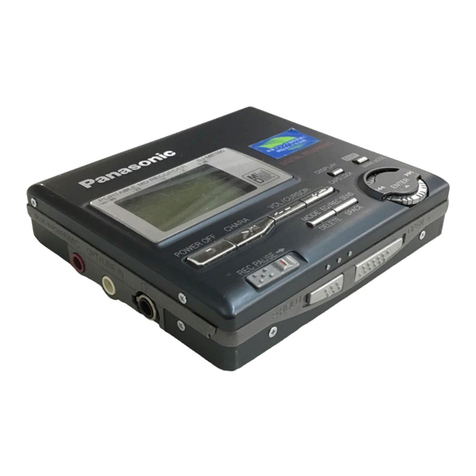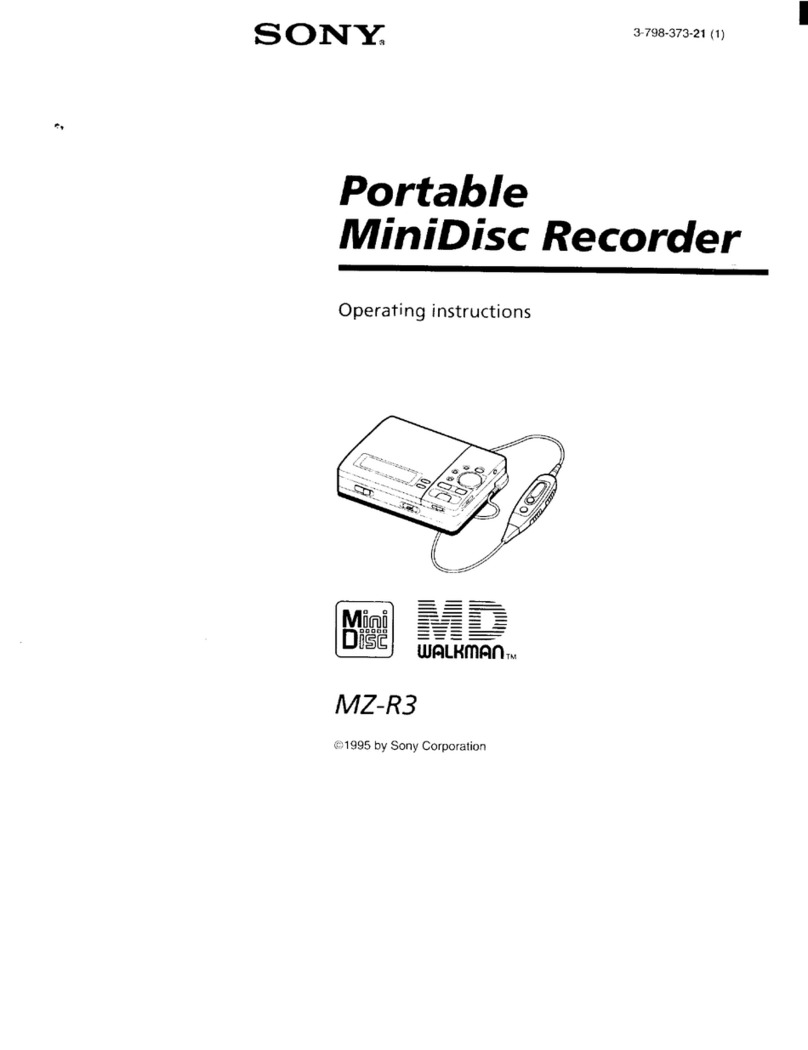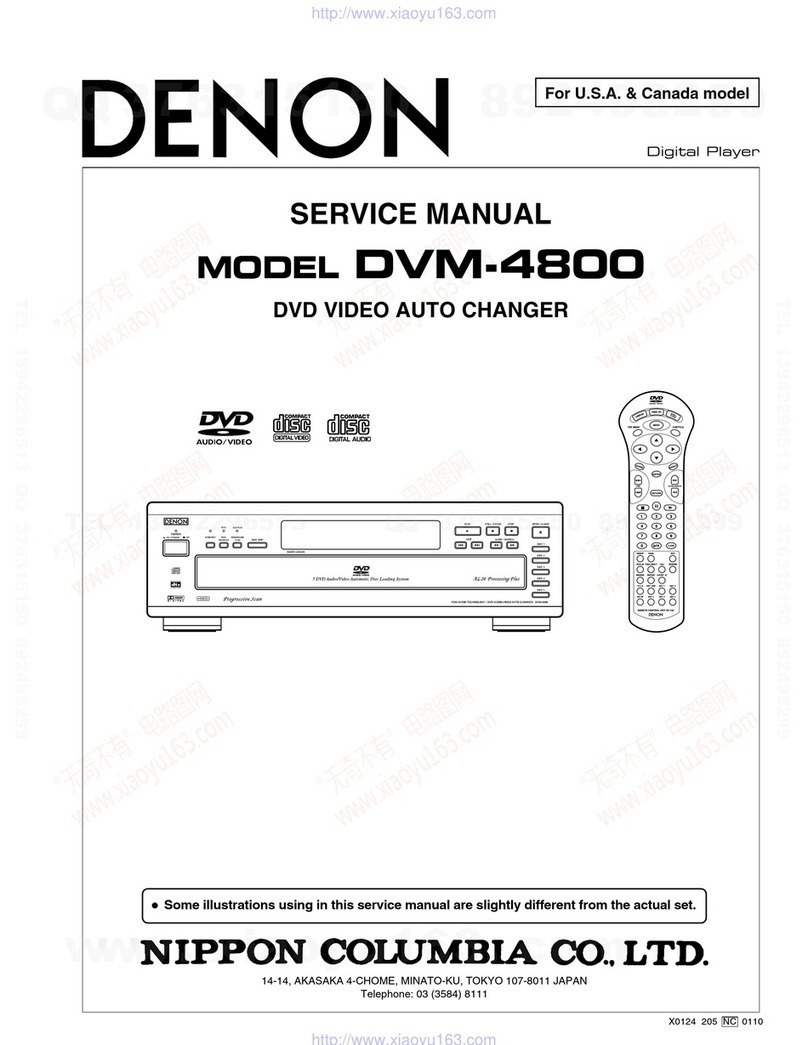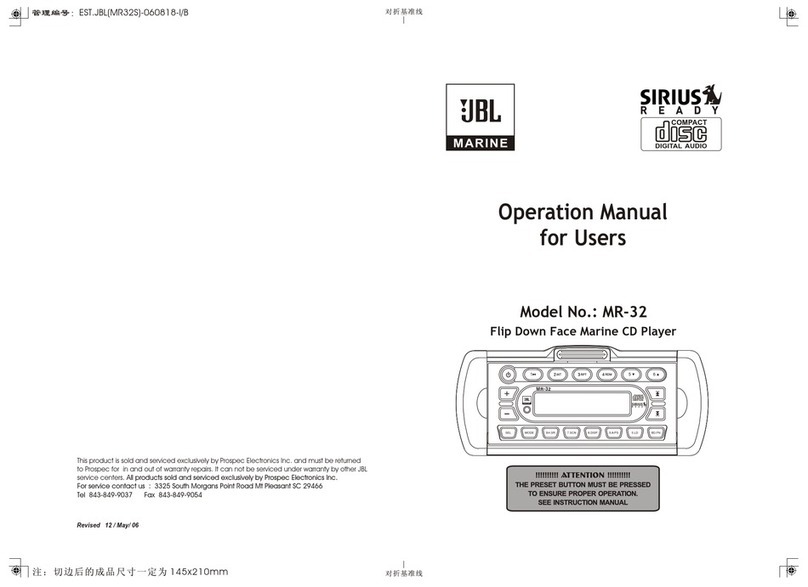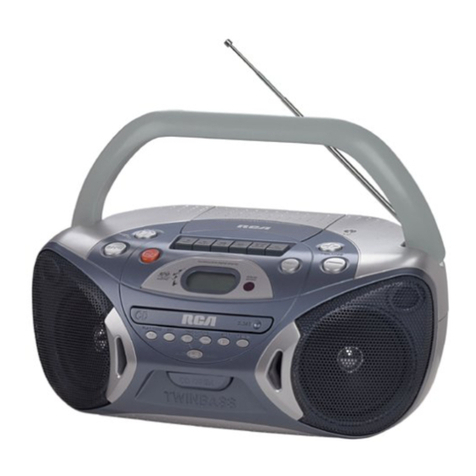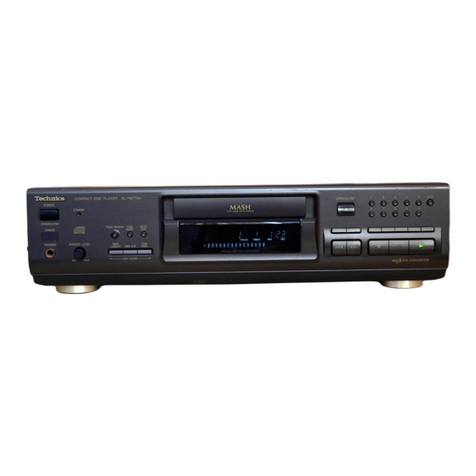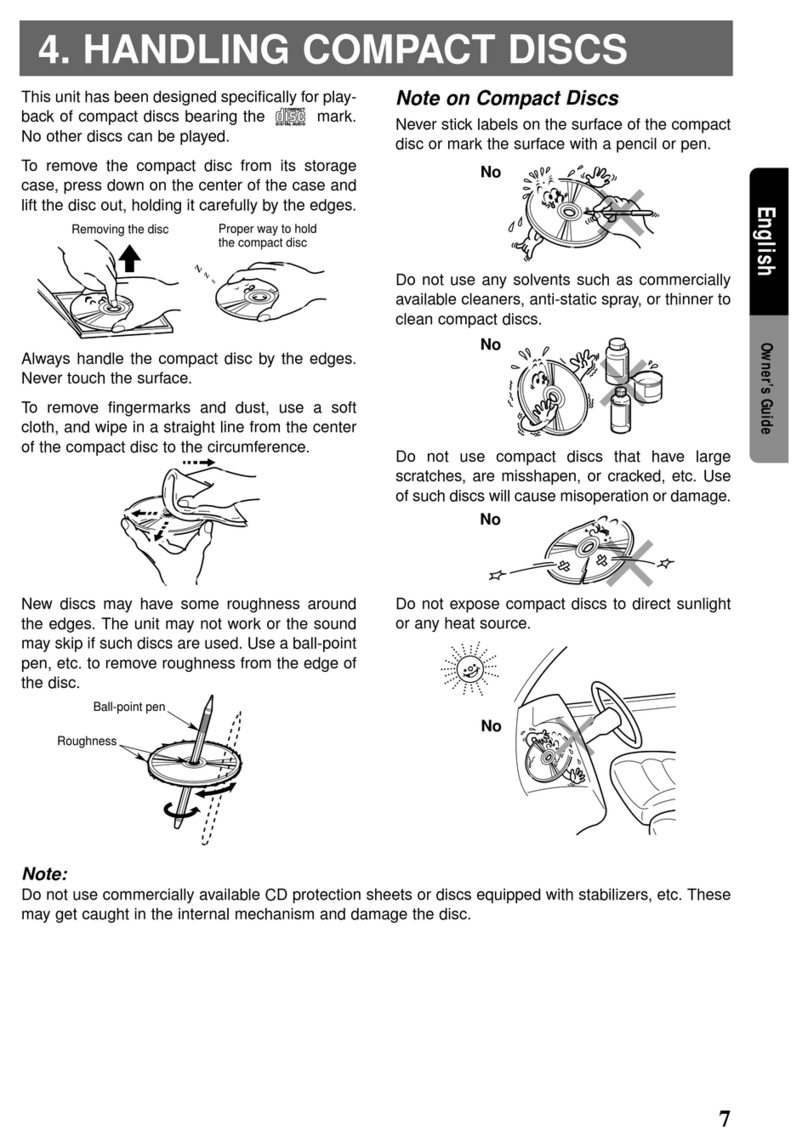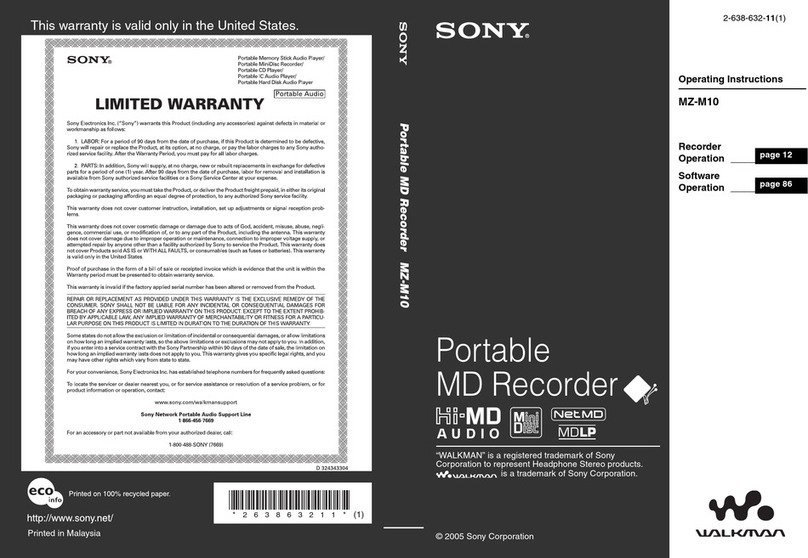3
Important safeguards
1. ReadInstructions– All the safety and operating instructions should
be read before the appliance is operated.
2. Retain Instructions – The safety and operating instructions should
be retained for future reference.
3. HeedWarnings– All warnings on the appliance and in the operating
instructions should be adhered to.
4. Follow Instructions – All operating and use instructions should be
followed.
5. Water and Moisture – The appliance should not be used near water
- for example, near a bathtub, washbowl, kitchen sink, laundry tub, in a
wet basement, or near a swimming pool, and the like.
6. Carts and Stands – The appliance should be used only with a cart or
stand that is recommended by the manufacturer.
6A. An appliance and cart combination
should be moved with care. Quick
stops, excessive force, and uneven
surfacesmay causetheapplianceand
cart combination to overturn.
7. Wall or Ceiling Mounting– The appliance should be mounted to a
wall or ceiling only as recommended by the manufacturer.
8. Ventilation – The appliance should be situated so that its location or
position does not interfere with its proper ventilation. For example, the
appliance should not be situated on a bed, sofa, rug, or similar surface
that may block the ventilation openings; or if placed in a built-in
installation, such as a book case or cabinet that may impede the flow of
airthroughtheventilationopenings,thereshouldbefreespaceofatleast
20 cm and open up behind the appliance.
9. Heat – The appliance should be situated away from heat sources such
asradiators,heatregisters, stoves, or other appliances (including ampli-
fiers) that produce heat.
10. Power Sources – The appliance should be connected to a power
supply only of the type described in the operating instructions or as
marked on the appliance.
11. Polarization – If the appliance is provided with a polarized plug
having one blade wider than the other, please read the following
information: The polarization of the plug is a safety feature. The
polarized plug will only fit the outlet one way. If the plug does not fit
fully into the outlet, try reversing it. If there is still trouble inserting it,
the user should seek the services of a qualified electrician. Under no
circumstances should the user attempt to defeat the polarization of the
plug.
12. Power-Cord Protection– Power-supply cords should be routed so
that they are not likely to be walked on or pinched by items placed upon
oragainst them, especially nearplugs, convenience receptacles, andthe
point where they exit from the appliance.
13. Cleaning– The appliance should be cleaned only as recommended by
the manufacturer.
14. Power Lines – An outdoor antenna should be located away from
power lines.
15. Nonuse Periods – The power cord of the appliance should be
unplugged from the outlet when left unused for a long period of time.
16. Object and Liquid Entry– Care should be taken so that objects do
not fall and liquids are not spilled into the enclosure through openings.
17. Damage Requiring Service– The appliance should be serviced by
qualified service personnel when:
A. The power-supply cord or the plug has been damaged; or
B. Objects have fallen, or liquid has been spilled into the appliance; or
C. The appliance has been exposed to rain; or
D. The appliance does not appear to operate normally or exhibits a
marked change in performance; or
E. The appliance has been dropped, or the enclosure damaged.
18. Servicing – The user should not attempt to service the appliance
beyond that described in the operating instructions. All other servicing
should be referred to qualified service personnel.
19. OutdoorAntenna Grounding– If an outsideantennaisconnected
to the receiver, be sure the antenna system is grounded so as to provide
some protection against voltage surges and built up static charges.
Article 810 of the National Electrical Code, ANSI/NFPA 70, provides
informationwith regard topropergrounding of themastand supporting
structure,groundingofthelead-inwiretoanantennadischargeunit,size
of grounding conductors, location of the antenna-discharge unit, con-
nection to grounding electrodes, and requirements for the grounding
electrode. See Figure 73.1.
FIGURE 73.1:
EXAMPLE OF ANTENNA GROUNDING AS PER NA-
TIONAL ELECTRICAL CODE
GROUND
CLAMP
ELECTRIC
SERVICE
EQUIPMENT
POWER SERVICE GROUNDING
ELECTRODE SYSTEM
(NEC ART 250, PART H)
GROUND CLAMPS
GROUNDING CONDUCTORS
(NEC SECTION 810-21)
ANTENNA
DISCHARGE UNIT
(NEC SECTION 810-20)
ANTENNA
LEAD IN
WIRE
NEC – NATIONAL ELECTRICAL CODE
S2898A
●The lightning flash with arrowhead symbol, within
an equilateral triangle, is intended to alert the user
tothepresenceofuninsulated“dangerousvoltage”
within the product’s enclosure that may be of suffi-
cientmagnitudetoconstituteariskofelectricshock
to persons.
●Theexclamation point within an equilateraltriangle
is intended to alert the user to the presence of
important operating and maintenance (servicing)
instructionsintheliteratureaccompanyingtheprod-
uct.
S3125A
PORTABLE CART WARNING
“WARNING”
“TO REDUCE THE RISK OF FIRE OR ELECTRIC SHOCK,
DO NOT EXPOSE THIS APPLIANCE TO RAIN OR MOIS-
TURE.”
CAUTION:
“TO REDUCE THE RISK OF ELECTRIC SHOCK, DO NOT
REMOVE COVER (OR BACK). NO USER-SERVICEABLE
PARTSINSIDE.REFERSERVICINGTOQUALIFIEDSERV-
ICE PERSONNEL.”
WARNING
RISK OF ELECTRIC SHOCK
DO NOT OPEN RISQUE DE CHOC ELECTRIQUE
NE PAS
OUVRIR
AVIS
